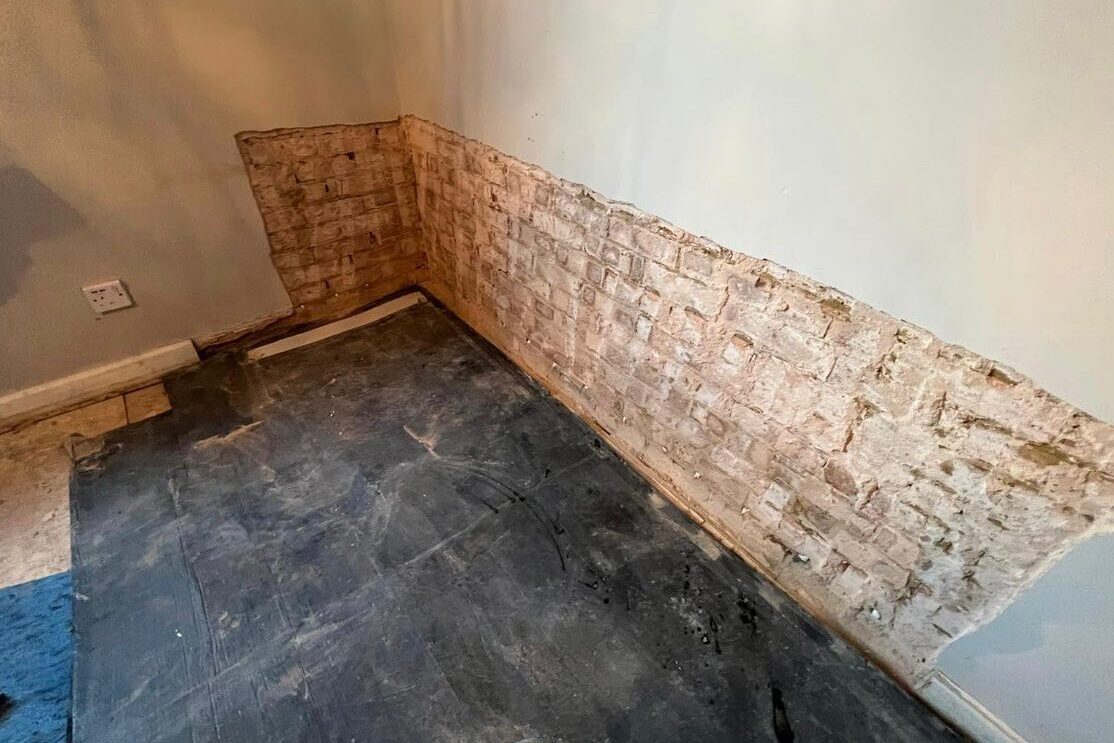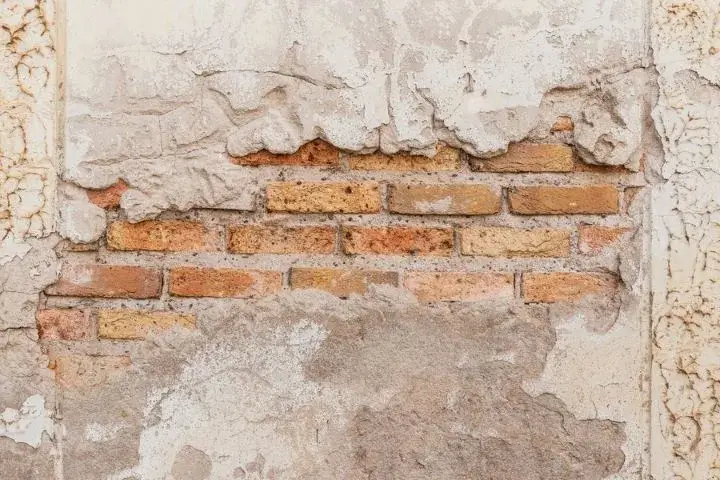How it works when you hire a mould treatment newcastle expert
How it works when you hire a mould treatment newcastle expert
Blog Article
Exploring the Different Strategies and Solutions for Effective Damp Proofing
Dampness in structures poses considerable obstacles to both structural integrity and interior air top quality. Various methods and options have arised to combat this pervasive problem. From typical damp-proof membranes to cutting-edge chemical treatments, each technique offers unique benefits. Comprehending these choices is necessary for reliable moisture control. However, choosing the best option depends upon specific building conditions and needs, prompting further exploration right into one of the most reliable wet proofing strategies available.
Recognizing the Reasons For Moisture
Dampness can emerge from different resources, recognizing these reasons is important for effective remediation. Commonly, dampness stems from 3 key resources: rising moist, penetrating moist, and condensation. Increasing moist occurs when groundwater takes a trip upwards through permeable materials, such as brick or rock, usually due to an absence of a reliable barrier (mould treatment newcastle). Penetrating moist is usually triggered by outside factors, consisting of roofing system leakages, faulty seamless gutters, or damaged wall surfaces, permitting water to infiltrate a home. Condensation, on the various other hand, results from excess wetness airborne, typically exacerbated by poor air flow and temperature distinctions, bring about water droplets creating on surfaces. Determining these underlying problems is important, as each sort of moisture calls for a tailored strategy for remediation. Appropriate analysis helps in determining the most efficient remedies, ultimately guarding the architectural integrity of a building and improving interior air quality
Standard Damp-Proof Membrane Layers

Chemical Damp-Proofing Solutions
Chemical damp-proofing services offer a cutting-edge method to avoid dampness breach in buildings. These approaches normally involve the application of fluid chemicals that permeate masonry and create a barrier against rising moist. Frequently made use of chemicals include silanes, siloxanes, and other water-repellent representatives that react with surface area products to produce a hydrophobic layer.The application procedure typically calls for drilling holes right into the walls, infusing the chemical solution, and enabling it to heal. This method is especially advantageous for older structures where conventional damp-proof membrane layers may be unwise. Chemical damp-proofing can be less disruptive and a lot more cost-efficient than extensive restoration projects.While efficient, these solutions depend on proper application and environmental problems for peak efficiency. damp removal newcastle. Routine upkeep and tracking are necessary to guarantee the durability of the damp-proofing therapy. Generally, chemical damp-proofing stands for a flexible choice for safeguarding structures against moisture-related damages
Tooth Cavity Wall Building And Construction Methods
Dental caries wall building methods supply numerous advantages, specifically in wetness control and energy efficiency. By integrating an air space between 2 layers of stonework, these walls successfully reduce water access while improving insulation. This combination not just shields structures from wetness however likewise adds to reduced power consumption.
Advantages of Tooth Cavity Walls
When considering reliable damp proofing approaches, the advantages of tooth cavity walls stand out plainly. Tooth cavity walls contain 2 different layers, creating an air void that effectively minimizes wetness infiltration. This style minimizes the threat of wetness, as the outer wall surface serves as an obstacle versus rain and water access. Additionally, dental caries wall surfaces improve thermal insulation, which adds to energy performance by minimizing heat loss. They additionally supply sound insulation, assisting to develop a quieter interior environment. Additionally, the air void enables ventilation, which assists in moisture control and minimizes the likelihood of mold development. These benefits not only boost the general comfort of a building yet also contribute to its long life and architectural honesty.
Moisture Control Techniques
Efficient wetness control techniques are important in dental caries wall surface building to guarantee lasting security versus moisture. One primary approach includes the incorporation of weep openings, which help with water drain from the tooth cavity, preventing build-up. Additionally, using breathable membranes can aid handle dampness levels while permitting trapped vapor to run away. Appropriate positioning of insulation is also critical, as it must not obstruct water drainage paths. Additionally, guaranteeing that the external leaves of the tooth cavity wall surface are created with waterproof materials improves total sturdiness. Routine upkeep checks are necessary to recognize any clogs or damage early, safeguarding the framework's stability. Eventually, a combination of these strategies forms a durable defense against moisture breach in tooth cavity wall surfaces.
Insulation and Power Effectiveness
Insulation plays a crucial duty in boosting energy efficiency within cavity wall surface construction. By integrating protecting materials, these walls develop a thermal obstacle that minimizes heat loss and minimizes power consumption. Effective insulation not just assists maintain a stable interior temperature level however likewise minimizes the threat of moisture, as it stops condensation within the wall tooth here cavity. Various techniques, such as using inflexible foam boards or mineral wool, can be utilized to achieve ideal insulation performance. In addition, correct installment is important to guarantee that gaps and spaces are decreased, which can otherwise endanger energy effectiveness. Eventually, a well-insulated dental caries wall surface contributes significantly to overall sustainability and decreases home heating and cooling prices for home owners.
Exterior Damp Proofing Techniques
External damp proofing approaches are necessary for safeguarding frameworks from wetness infiltration. 2 efficient techniques consist of the application of waterproof membrane layers and the installation of French drains pipes. These services aid mitigate water buildup and preserve the stability of buildings.
Waterproof Membrane Application
While numerous techniques exist for protecting against wetness access, the application of water-proof membranes stays a highly efficient exterior damp proofing method. These membrane layers are usually made from materials such as polyethylene, rubber, or modified bitumen, giving a robust obstacle versus water penetration. The setup procedure involves using the membrane layer to the exterior surface areas of structures or walls, ensuring total insurance coverage to stop leakages. Appropriate attachment and securing at joints are crucial to maximizing efficiency. Water resistant membrane layers can be used in numerous forms, including liquid finishings and sheet membrane layers, permitting adaptability based upon the certain needs of the structure. This technique not only safeguards buildings from dampness however likewise enhances their longevity and structural integrity.
French Drain Installation
One effective method for taking care of groundwater and preventing dampness buildup around a structure's structure is the setup of a French drainpipe. This water drainage system includes a trench filled up with crushed rock and a perforated pipeline that redirects surface area water far from the structure. Proper setup calls for mindful preparation, ensuring that the drain inclines far from the framework to promote excellent water flow. In addition, the area of the drainpipe is important; it should be placed in locations prone to merging or excess wetness. Regular upkeep, including clearing particles from the crushed rock and guaranteeing the pipeline remains unobstructed, is crucial for lasting performance. Inevitably, a well-installed French drain can significantly lower the danger of water-related issues in structures and cellars.
Interior Waterproofing Approaches
Interior waterproofing approaches are important for shielding a building's inside from moisture infiltration and possible water damages. These strategies commonly involve the application of customized materials and methods designed to develop a moisture obstacle within the structure. One usual strategy is the usage of water-proof finishes or sealants on walls and floors, which protect against wetness from passing through surfaces.Additionally, mounting interior drain systems, such as sump pumps, can successfully take care of water accumulation in cellars and creep spaces. One more technique entails using vapor obstacles, which are installed to prevent wetness motion from the ground right into living spaces.Moreover, addressing any type of splits or voids in wall surfaces or structures with appropriate sealants guarantees a detailed defense against water intrusion. By carrying out these indoor waterproofing techniques, homeowner can considerably reduce the risk of mold and mildew development, structural damages, and other moisture-related concerns. Proper implementation of these strategies is essential for long-term defense and structure stability.
Routine Maintenance and Evaluation Practices
Normal upkeep and assessment practices are essential for guaranteeing the long-lasting performance of wet proofing solutions in any type of structure. Regular checks make it possible for homeowner to identify very early signs of wetness invasion, such as peeling off paint, mold and mildew development, and mildewy smells. These indicators can signify underlying problems that call for prompt attention.Inspections must be conducted at the very least each year, focusing on vulnerable locations like basements, creep spaces, and outside walls. Throughout these evaluations, homeowner should check out sealants, water drainage systems, and ventilation to verify they work correctly.Additionally, maintaining downspouts and gutters is essential, as clogged up systems can result in water buildup near the foundation. Applying a normal maintenance timetable, along with prompt repairs, can considerably prolong the lifespan of wet proofing steps and protect the architectural honesty of the structure. Proactive measures eventually add to the overall health and wellness of the living atmosphere.
Regularly Asked Inquiries
How Long Does Damp Proofing Commonly Last?
The duration of moist proofing performance differs, generally lasting between 20 to half a century. Factors such as application quality, environmental conditions, and maintenance techniques significantly influence the durability of the moist proofing therapy.

Can I Damp Proof My Home Myself?
The individual considered the usefulness of DIY damp proofing. With proper study and the appropriate materials, it is possible. However, they also recognized the significance of expert support to assure durable performance and avoid future issues.
What Are the Signs of Ineffective Damp Proofing?
Indicators of inefficient moist proofing include persistent musty smells, noticeable mold growth, peeling off paint, wet spots on wall surfaces, and timber decay - damp proofing newcastle. Property owners should resolve these problems quickly to avoid more damages and health problems
Does Damp Proofing Affect Indoor Air Top Quality?

Just How Much Does Specialist Damp Proofing Expense?
Expert damp proofing costs vary considerably, typically varying from $1,000 to $5,000 relying on the home's size, the degree of the moist issue, and picked methods. Each situation calls for a tailored evaluation for precise rates. Typically, wetness originates from three key sources: increasing wet, penetrating moist, and condensation. When taking into consideration effective moist proofing approaches, the advantages of tooth cavity wall surfaces stand out prominently. External moist proofing approaches are important for securing frameworks from dampness infiltration. While different techniques exist for preventing moisture access, the application of water-proof membrane layers remains a highly efficient outside moist proofing strategy. Indicators of ineffective damp proofing consist of relentless stuffy odors, noticeable mold development, peeling off paint, wet spots on wall surfaces, and timber degeneration.
Report this page